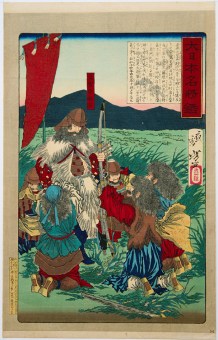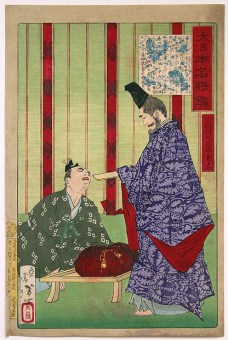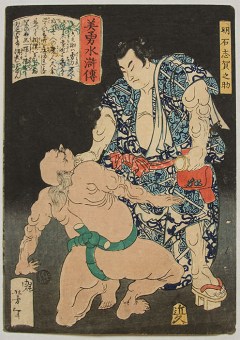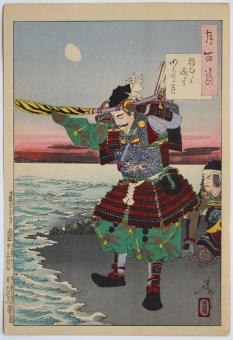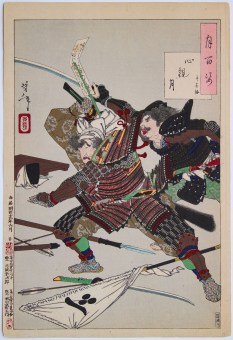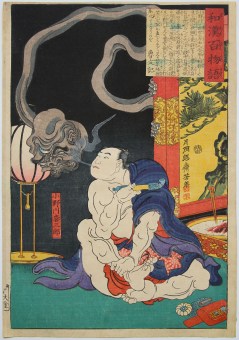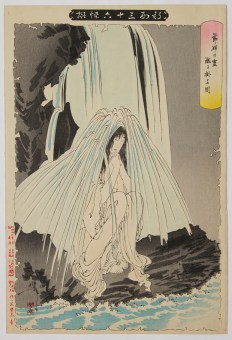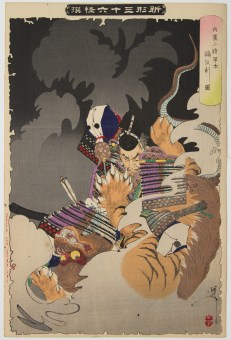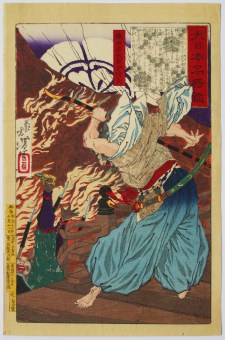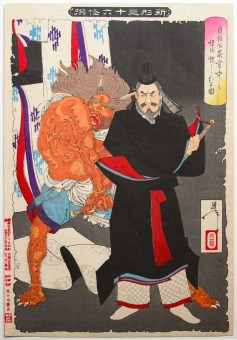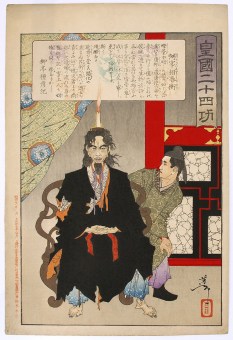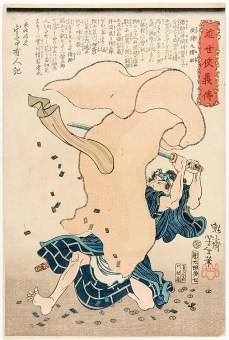Heroes
Warrior prints, called musha-e, depict legendary tales of fierce warriors and famous heroes defeating military opponents and mythical creatures. This significant woodblock print genre merges history, legend, literature and theater to celebrate the traditional Japanese warrior culture.
From Kuniyoshi to Yoshitoshi
The towering figure of musha-e was Utagawa Kuniyoshi, one of the most successful of all Japanese woodblock artists during the Edo period. Creating artistically and technically groundbreaking prints, like the 'One Hundred and Eight Heroes of the Suikoden,' earned him the nickname Musha-e no Kuniyoshi or “Kuniyoshi of the Warrior Prints.” Dynamic compositions, bold facial expressions and almost caricatural depictions of the scene heightened the effect of his designs.
The genre reaches a new peak in the unique prints of celebrated Tsukioka Yoshitoshi. Yoshitoshi produced many print series and a large number of triptychs, many of which are of high quality. Two of his most famous series, 'One Hundred Views of the Moon and 36 Ghosts', contain numerous masterpieces. Other musha-e artists of that time were Chikanobu and Yoshitora.
Heroic samurai and glorious battles
The Edo period was a time of peace and political stability, so Tokugawa Japan, had little need for samurai anymore. Nevertheless, samurai had taken up a special place in Edo pop-culture. Honorable and noble warriors of the country's warlike past became popular role models for their courage and strength.
Their stories of past battles were a source of inspiration for new prints. Classic stories included Kanadehon Chūshingura (about the 47 rōnin or "masterless samurai"), Heike Monogatari, and Minamoto no Yorimitsu. Along with folk tales and supernatural stories, glorious battles and heroes were effectively staged in woodcuts capturing drama and excitement.
A modern shift towards senso-e
During the Meiji period, nationalism grew considerably. The depictions shifted from legendary samurai and folk heroes to actual soldiers and honored generals. By the beginning of the 20th century, senso-e, or "images of war,“ emerged as a modern answer to the musha-e genre.
Fumiya no Watamaro and surrendering rebels in Oshu
(D627)
worldwide shipping
Taira no Shigemori sending gold to China
(G221)
Biyû Suikoden (Akashi Shiganosuke)
(J045)
Inamuragasaki no mei honobono tsuki
(K005)
Shinkan no tsuki (The moon's inner vision)
(K004)
Onogawa Kisaburo
(J761)
Genji yugao maki (The Yugao chapter from The Tale of Genji)
(K048-F250)
Ii no Hayata Killing a Nue at the Imperial Palace
(K044-F253)
Oda Udaijin Taira Nobunaga
(K075-F357)
Lord Sadanobu Threatening a Demon in the Palace at Night
(K045-F247)
Hitsu no Saishô Haruhira
(1338)
Sageo no Isuke
(909)



